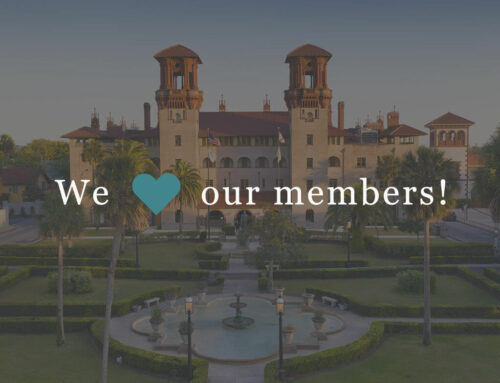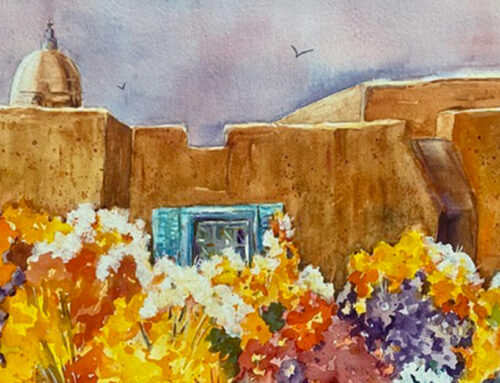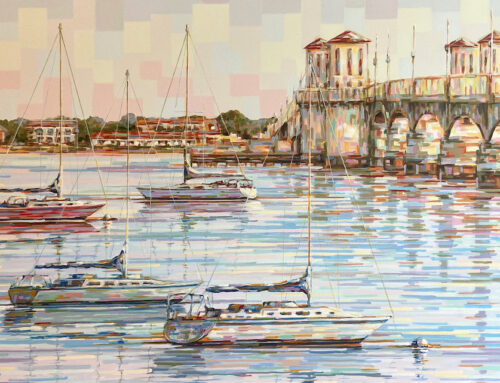Felix F. de Crano (French-American, 1839-1908)
Marshes and St. Augustine Skyline, 1893
Oil on Board
St. Augustine in a New Light:
American Impressionism from the Collection of the Lightner Museum
Opening April 8, 2021, this new exhibition from the Lightner Museum explores the work of the American Impressionist painters who wintered in St. Augustine at the dawn of the 20th Century.
Impression arrived in the United States in the late 1880s, more than a decade after it originated in Paris. In the hands of American artists, it was subject to a variety of interpretations. While some painters adopted the modern subject matter, broken brushstrokes, fleeting atmospheric effects, and bright palette of the French Impressionists, others did not fully abandon their academic training. In his review of paintings at the Panama-Pacific Exhibition of 1916, art critic Christian Brinton declared, “It must not be assumed that American Impressionism and French Impressionism are identical. The American painter accepted the spirit, not the letter of the new doctrine.”

Felix F. de Crano (French-American, 1839-1908)
Courtyard of the Hotel Alcazar, ca. 1903
Watercolor on Paper
The growth of Impressionism as an art movement in America was significantly enhanced by the advent of artists’ colonies throughout the Northeastern United States. These bohemian enclaves, where artists were able to exchange ideas, collaborate, and experiment, were typically located in the countryside or coastal regions outside of major urban centers including New York, Philadelphia, and Boston. In the waning years of the 19th Century, St. Augustine became a winter haven for Impressionist painters from these artists’ colonies. Attracted by the region’s warm climate and picturesque scenery, the artists found a reliable source of income in the wealthy tourists who wintered at Henry Flagler’s grand hotels.

William Staples Drown (American, 1856-1915)
Charlotte Street, St. Augustine, 1890
Oil on Canvas
An astute businessman, Flagler engaged artists to enhance the guest experience of his St. Augustine hotels. The Gilded Age entrepreneur created space for several artist’s studios at his Ponce de Leon Hotel. One critic noted that “the studios are among the most attractive places to visit in the city. The artists are courteous and obligingly show their pictures…” The presence of artists at Flagler’s hotel enhanced the quality of his properties, while the paintings they produced catered to eager tourists seeking mementos of their stay in America’s oldest city.
With its quaint streets, historic buildings, bustling harbors, and magnificent coastline St Augustine offered endless inspiration for American Impressionist painters. The lyrical and dazzling paintings produced by the artists at work in St. Augustine presented the Ancient City and its environs in a bold new light.
Download a walking tour of historic St. Augustine inspired by the locations in this exhibition.






